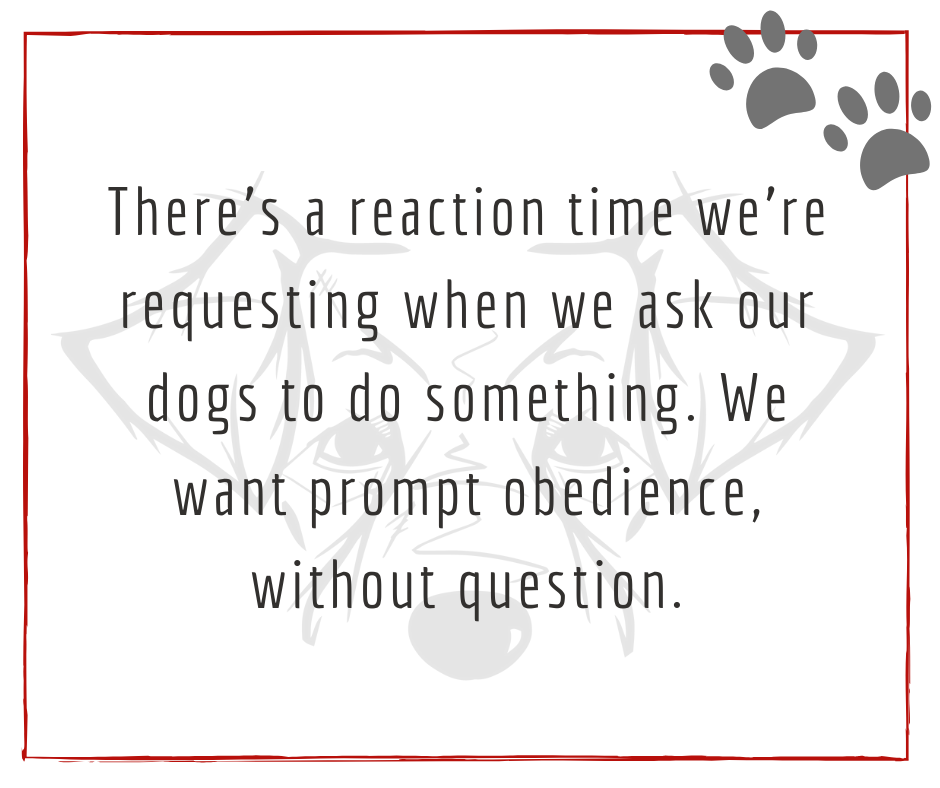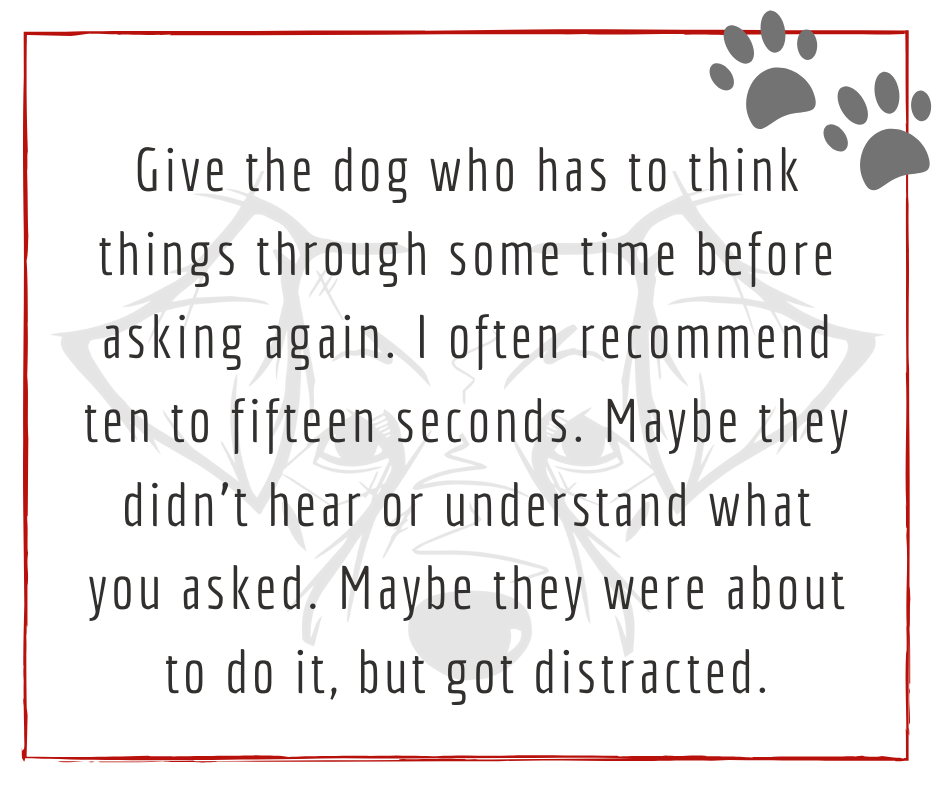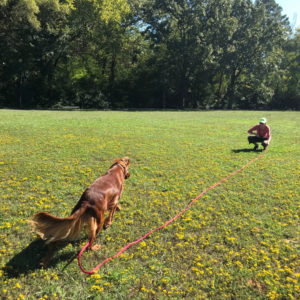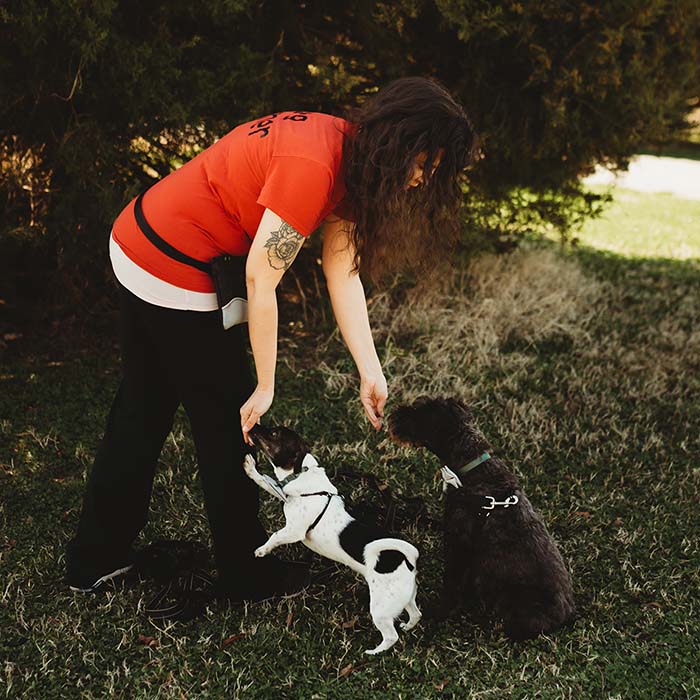Wait
We expect prompt obedience from our dogs, but sometimes they need a second
by Elizabeth Silverstein
I tell clients all the time to be mindful of how many times they say a training command.
“Just once, then wait!” I’ll say in class.
It’s one of the hardest issues to be mindful of. We’re human beings, and we like to talk. Dogs are a typically a bit quieter, relying more on physical cues, unless they’re a breed known for talking back, like a Husky.

I was training one of my favorite Huskies recently, Loki, on a walk and train session. He and his doggy sister have some reactivity and some other challenging habits in reference to polite greetings, recall, and loose leash walking, so we’ve been doing some private lessons and walk and trains. He was training well, paying attention, and offering a nice loose leash. But then I needed a photo to send to his people, and he wouldn’t sit right away.
I found myself repeating the word again, then again, as Loki’s nose twitched, taking in all the scents of a breeze that flowed around us.
I’d forgotten my own rule so easily.
There’s a reaction time we’re requesting when we ask our dogs to do something. We want prompt obedience, without question. But sometimes the dog is enjoying a scent, figuring out if the reward is worth the hassle, or just not interested. By saying the word once, and then waiting, we’re giving our dogs a chance to think it through. If they don’t, we’ve got perhaps a verbal “uh uh” or a lure as a reminder. Dog training is a lot of repetition and trying again, all the boring little things that we forget when we get impatient.

Wait.
Give the dog who just arrived in the home from the shelter some time to settle in. Often dogs require a decompression time, and the 3-3-3 rule has been making the rounds on social media. Dogs are typically in shock for the first three days, start to settle in after the first three weeks, and then fit into their new routine after three months. Some call those first three or so weeks the “honeymoon period”, where a dog is on his best behavior until he realizes he’s home. Once a dog is comfortable, undesirable behaviors can start to pop up, like chewing on the furniture or getting into the trash. A dog can go from seemingly calm and chill to having boundless energy.
Wait.
Give the dog who has to think things through some time before asking again. I often recommend ten to fifteen seconds. Maybe they didn’t hear or understand what you asked. Maybe they were about to do it, but got distracted. Maybe they just didn’t know, and they need to learn or relearn what was requested, even if they were doing it just fine last week.

Wait.
This holiday season, give your dog some time and yourself some grace.
Telltail Dog Training offers group classes and private in-home lessons in the Little Rock area, along with training walks for current clients. Email me, Liz, at info@telltaildogtraining.com for more information. Also, I still write for Philly Unleashed, where I learned how to dog train. Read my latest client spotlight here. And be sure to grab your copy of FurEver Home! This special book includes seven rescue profiles written by me, along with training tips. Now available, just in time for Christmas.



